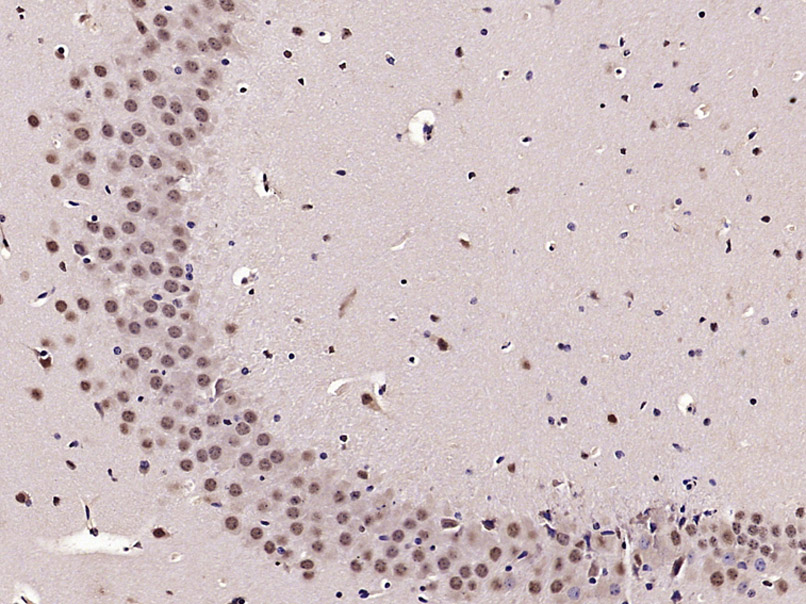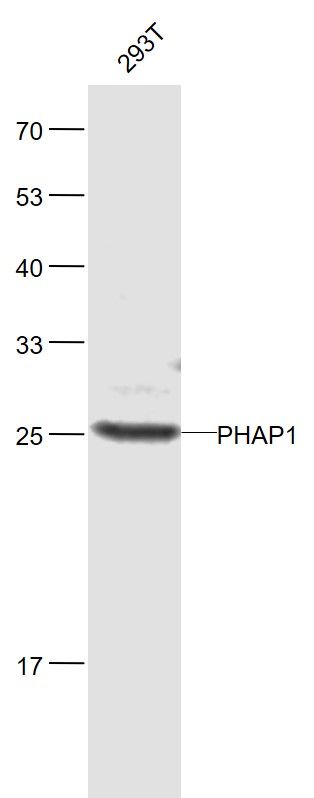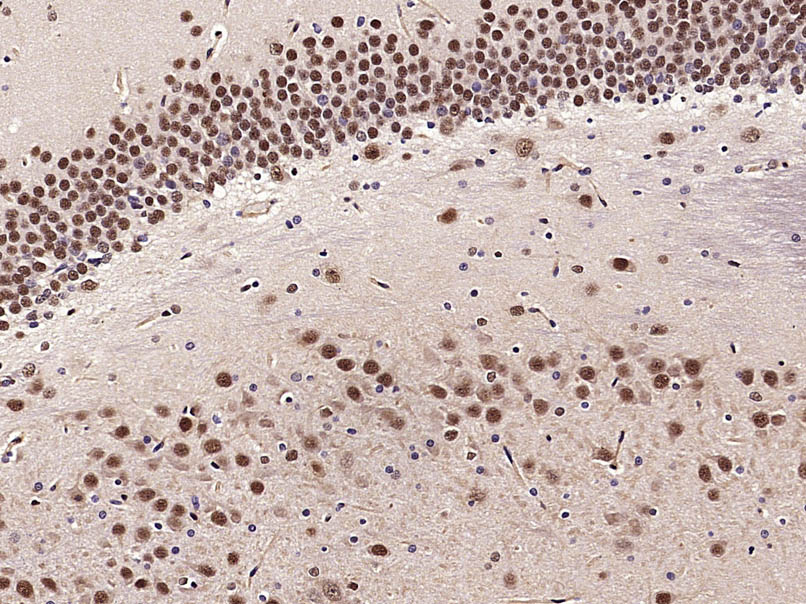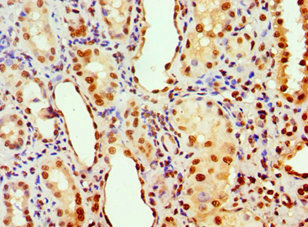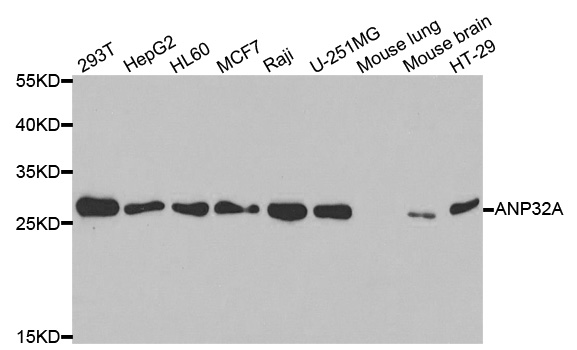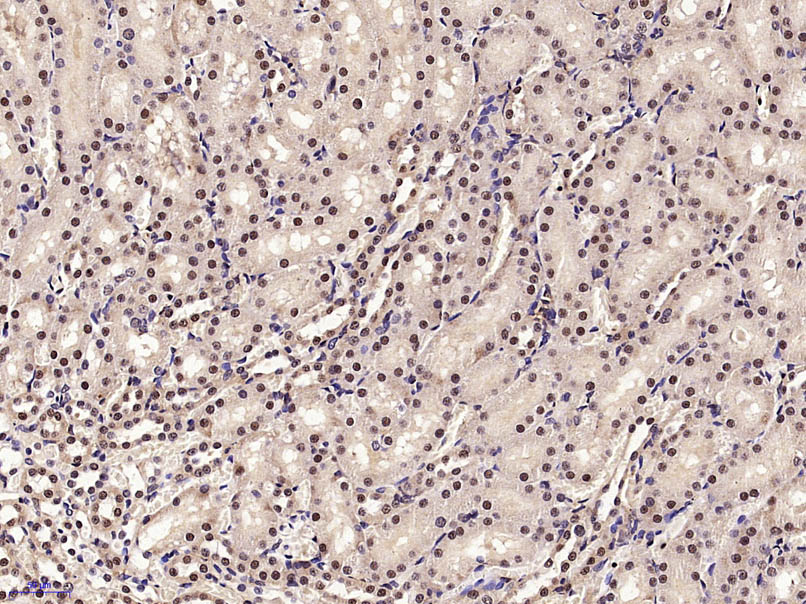
Paraformaldehyde-fixed, paraffin embedded Rat kidney; Antigen retrieval by boiling in sodium citrate buffer (pH6.0) for 15min; Block endogenous peroxidase by 3% hydrogen peroxide for 20 minutes; Blocking buffer (normal goat serum) at 37°C for 30min; Antibody incubation with PHAP Polyclonal Antibody, Unconjugated (bs-6083R) at 1:400 overnight at 4°C, DAB staining.
PHAP1 Polyclonal Antibody
BS-6083R
ApplicationsImmunoFluorescence, ImmunoPrecipitation, Western Blot, ELISA, ImmunoCytoChemistry, ImmunoHistoChemistry, ImmunoHistoChemistry Frozen, ImmunoHistoChemistry Paraffin
Product group Antibodies
TargetANP32A
Overview
- SupplierBioss
- Product NamePHAP1 Polyclonal Antibody
- Delivery Days Customer16
- ApplicationsImmunoFluorescence, ImmunoPrecipitation, Western Blot, ELISA, ImmunoCytoChemistry, ImmunoHistoChemistry, ImmunoHistoChemistry Frozen, ImmunoHistoChemistry Paraffin
- Applications SupplierWB(1:300-5000), ELISA(1:500-1000), IHC-P(1:200-400), IHC-F(1:100-500), IF(IHC-P)(1:50-200), IF(IHC-F)(1:50-200), IF(ICC)(1:50-200), IP(1-2ug)
- CertificationResearch Use Only
- ClonalityPolyclonal
- Concentration1 ug/ul
- ConjugateUnconjugated
- Gene ID8125
- Target nameANP32A
- Target descriptionacidic nuclear phosphoprotein 32 family member A
- Target synonymsC15orf1, HPPCn, I1PP2A, LANP, MAPM, PHAP1, PHAPI, PP32, acidic leucine-rich nuclear phosphoprotein 32 family member A, acidic (leucine-rich) nuclear phosphoprotein 32 family, member A, acidic nuclear phosphoprotein pp32, cerebellar leucine rich acidic nuclear protein, epididymis secretory sperm binding protein, hepatopoietin Cn, inhibitor-1 of protein phosphatase-2A, leucine-rich acidic nuclear protein, mapmodulin, potent heat-stable protein phosphatase 2A inhibitor I1PP2A, putative HLA-DR-associated protein I, putative human HLA class II associated protein I
- HostRabbit
- IsotypeIgG
- Protein IDP39687
- Protein NameAcidic leucine-rich nuclear phosphoprotein 32 family member A
- Storage Instruction-20°C
- UNSPSC12352203
References
- Hung G, Flint SJ. Normal human cell proteins that interact with the adenovirus type 5 E1B 55kDa protein. Virology. 2017,504:12-24. doi: 10.1016/j.virol.2017.01.013Read this paper

